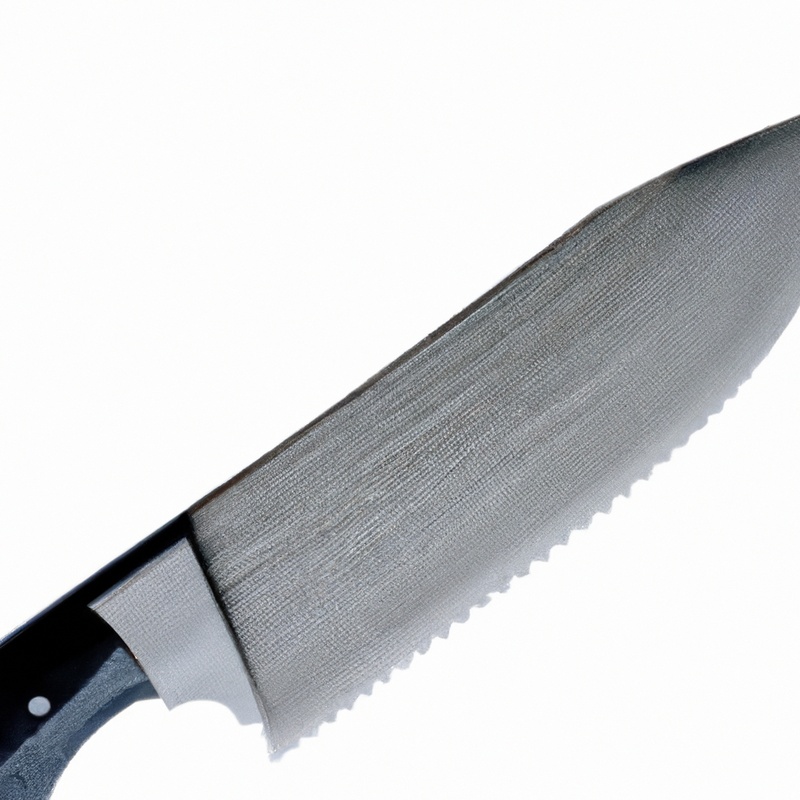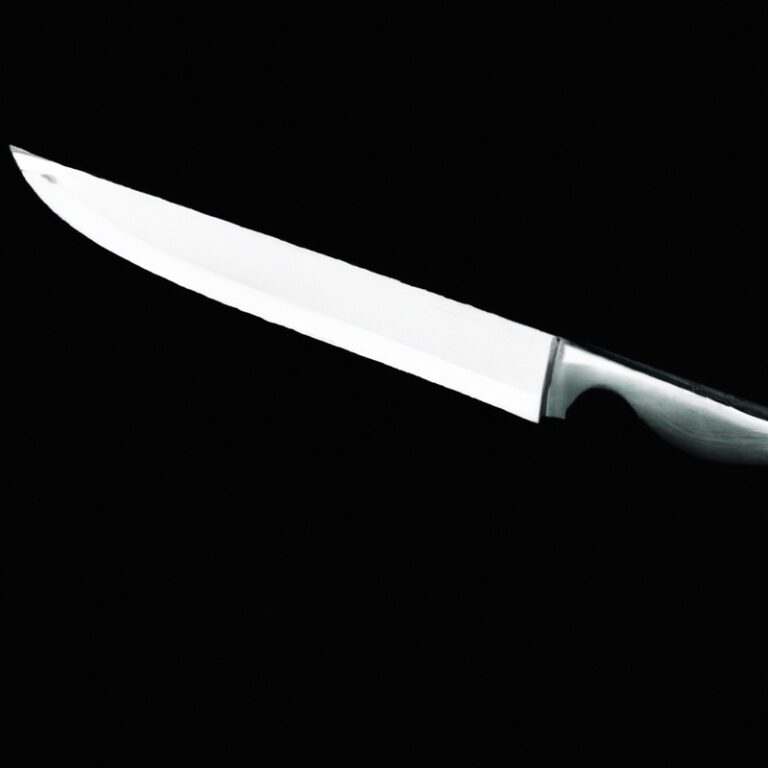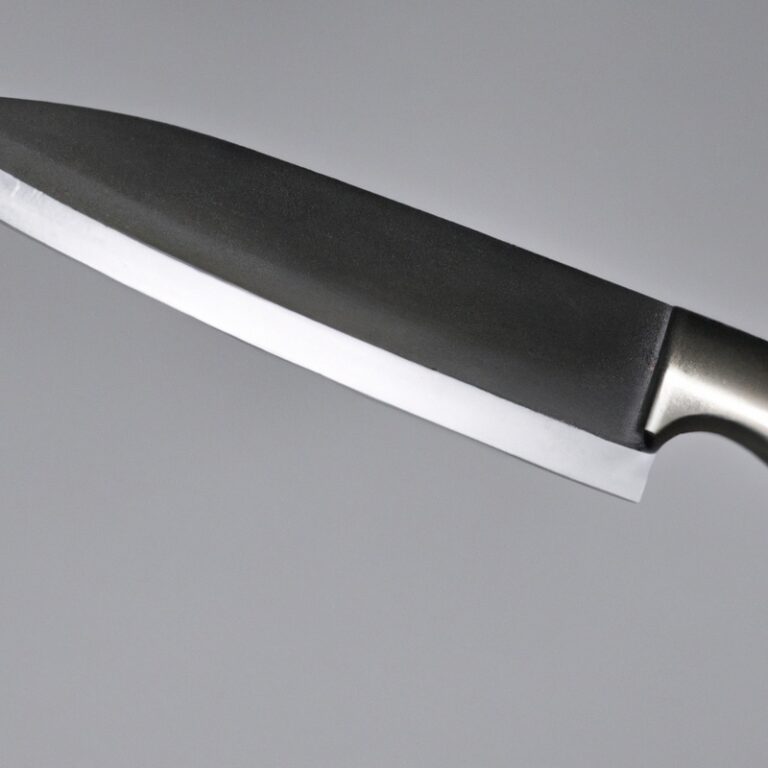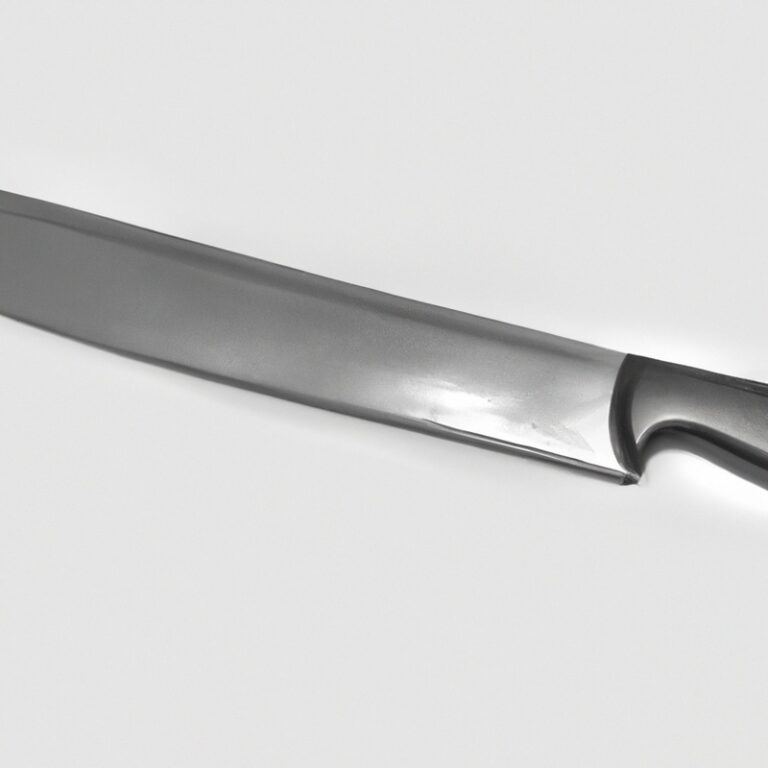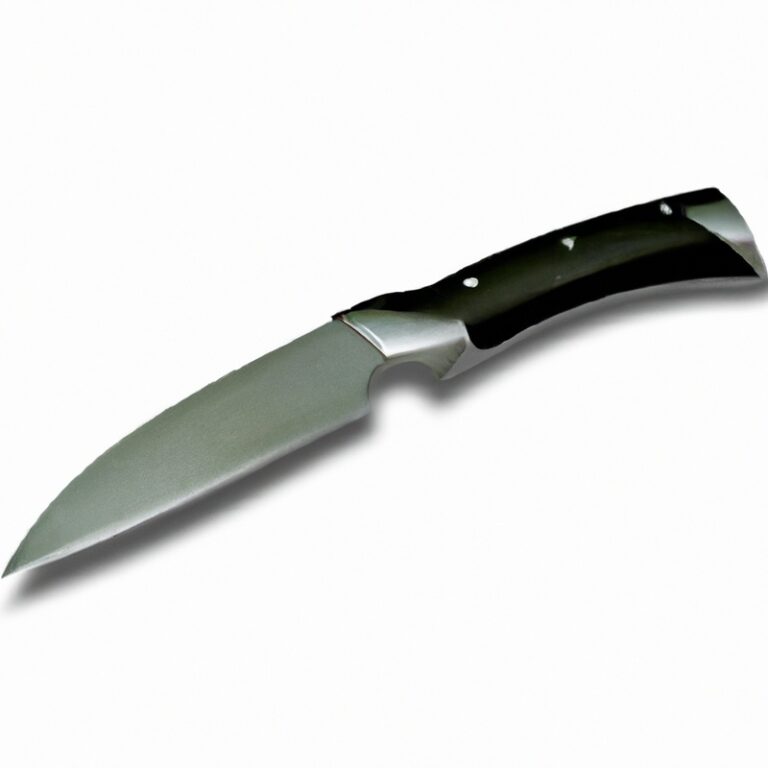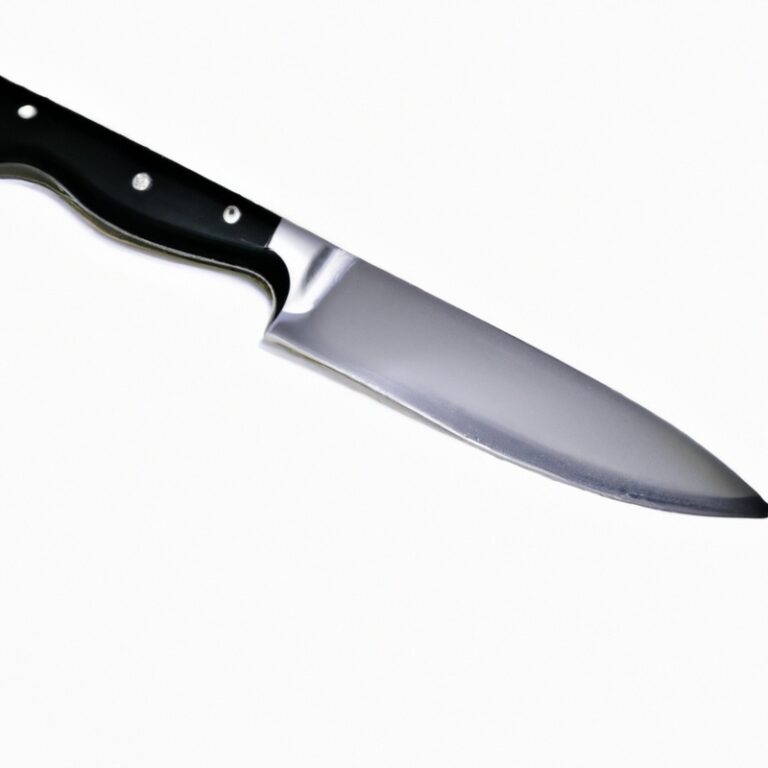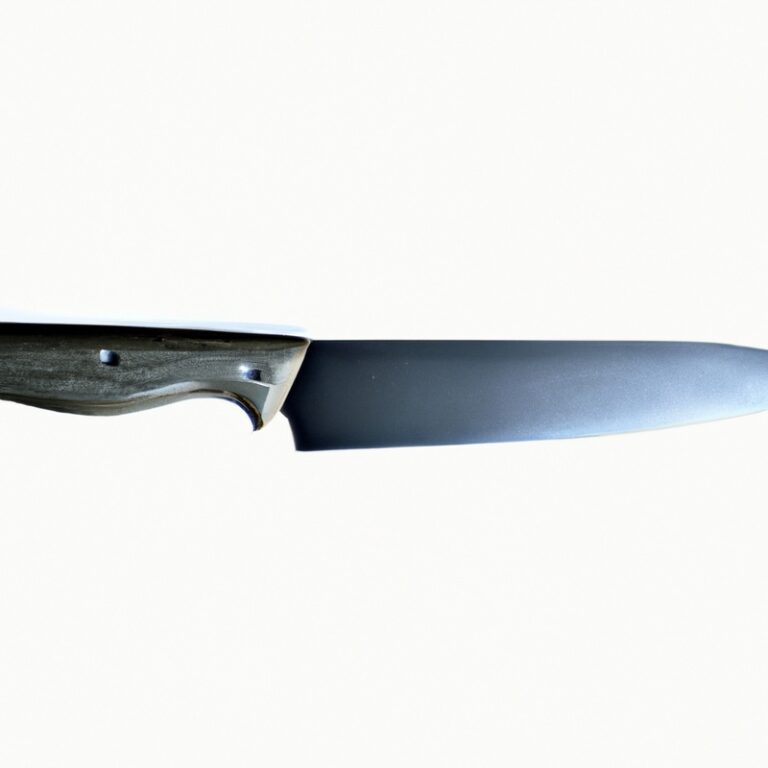How Does The Serrated Edge Of a Knife Assist In Cutting Through Tough Rinds Of Melons?
Key Takeaways:
- The serrated edge of a knife helps grip the tough rind of melons, allowing for easier and more efficient cutting.
- The saw-like teeth on a serrated knife allow for a sawing motion, which reduces the need for downward pressure and helps prevent the melon from slipping during cutting.
- The combination of the serrated edge and the sharp point of a knife allows for precise initial puncture, making it easier to start cutting through the tough melon rind.
- The back and forth motion of a serrated knife’s teeth creates a sawing effect on the melon rind, making it easier to separate the fruit from its tough outer layer.
Are you tired of struggling to slice through the tough rinds of juicy melons? Well, fret no more! I’m here to spill the secrets of the serrated knife and how it can revolutionize your melon cutting game.
In this article, we’ll delve into the anatomy of a serrated knife and explore its unique characteristics that make it perfect for tackling those challenging melon rinds.
From understanding the serrated edge to the benefits of its slicing motion, you’ll discover why this kitchen tool is a must-have for melon lovers. So, let’s get to the juicy details!
The Anatomy of a Serrated Knife
What is a Serrated Knife?
A serrated knife is a type of kitchen knife that has a saw-like edge instead of a smooth, straight edge. The serrations are small, pointed teeth that help grip and cut through tough or slippery surfaces, such as hard crusts or tough rinds.
This serrated edge allows for more control and efficiency when cutting, making it easier to slice through foods without crushing them.
Serrated knives are particularly useful for cutting through bread, tomatoes, and other foods with tough exteriors.
How Does a Serrated Knife Differ from a Straight-Edged Knife?
A serrated knife differs from a straight-edged knife in that it has a scalloped or toothed edge, while a straight-edged knife has a smooth, straight edge. The serrated edge creates tiny points that grip and cut through tough surfaces, making it ideal for slicing through crusty bread, soft fruits, and vegetables with tough skins.
The saw-like action of a serrated knife allows for efficient cutting with minimal pressure.
Additionally, the serrated edge tends to stay sharper for longer periods compared to a straight-edged knife.
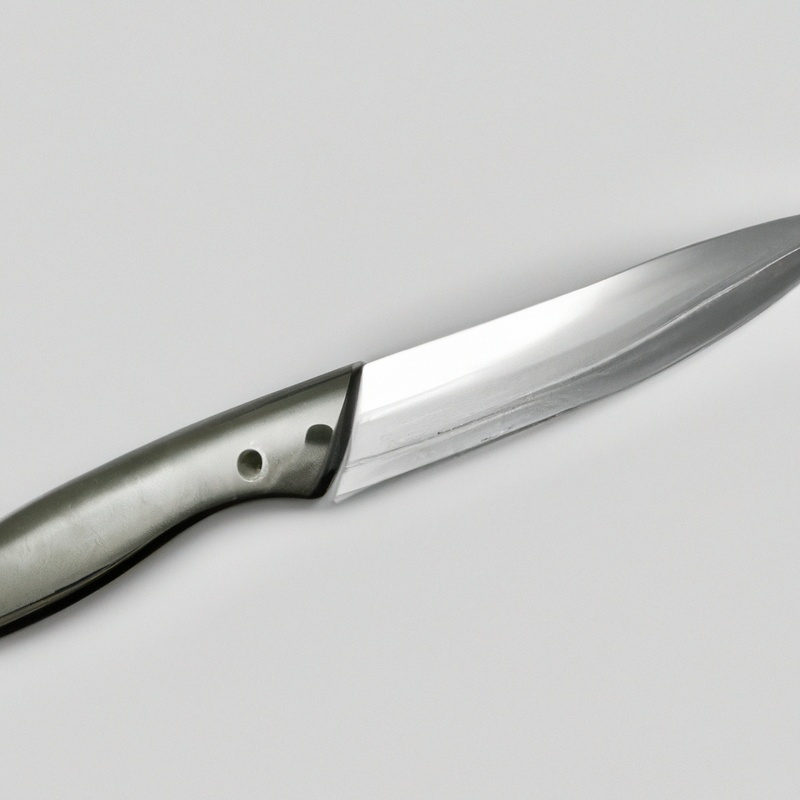
Understanding the Serrated Edge
The serrated edge of a knife is characterized by small, jagged teeth along the cutting edge. These teeth create points of contact with the object being cut, allowing for better grip and control.
When slicing through tough rinds, such as those found on melons, the serrated edge can easily penetrate and grip the surface, preventing the knife from slipping and providing a sawing motion that cuts through the tough exterior.
This sawing technique is especially effective when dealing with hard, slippery surfaces where a straight-edged knife may struggle. The serrated edge helps to make clean, precise cuts through the toughest of rinds, making it an excellent choice for cutting through melons and other challenging fruits and vegetables.
How Does a Serrated Knife Cut?
Slicing Motion and Ripping Effect
A serrated knife’s slicing motion and ripping effect are what make it so effective in cutting through tough rinds, like those found on melons. When you use a serrated knife, the teeth of the blade create a back-and-forth sawing motion that helps you slice through the tough outer layer.
As the knife moves through the rind, the serrations grip the surface, preventing the knife from slipping, and allowing the ripping effect to occur.
This ripping effect helps the knife make its way through the tough outer layer of the melon, ensuring a clean cut without crushing the fruit inside. So, next time you’re cutting into a melon, reach for a serrated knife for smooth and easy slicing.
The Benefits of the Sawing Technique
The sawing technique, used with a serrated knife, offers several benefits when cutting through tough surfaces like melon rinds. Firstly, it allows for a controlled and even cut, ensuring that the melon flesh is not damaged.
Secondly, the back-and-forth motion of sawing helps to break through the tough outer layer of the rind more easily.
Lastly, the sawing technique reduces the chances of the melon slipping or sliding, making it safer to cut. So, next time you’re slicing melons, try the sawing technique with your serrated knife for optimal results.
Preventing the Melon from Being Crushed
To prevent the melon from being crushed while cutting, a serrated knife is the ideal tool. The serrated edge helps grip the surface of the melon, allowing for a controlled cut without applying excessive pressure.
This helps maintain the shape and integrity of the fruit while effectively slicing through the tough rind.
Additionally, the sawing motion of the serrated edge reduces the risk of the melon sliding or slipping during the cutting process. So, when it’s time to enjoy some juicy melons, reach for a serrated knife to ensure a clean and successful cut.

Cutting Through Tough Rinds of Melons
The Challenges of Cutting Melon Rinds
Cutting melon rinds can be challenging due to their tough and thick texture. One of the main difficulties is the risk of the knife slipping or skidding on the surface of the rind, making it harder to cut through.
Another challenge is the potential for the melon to roll or move, making it difficult to maintain a steady grip and control while cutting.
The tough rinds can also put strain on the blade, leading to a higher risk of the knife becoming dull or damaged. Overall, cutting melon rinds requires precision and a knife that can effectively handle the task.
How Does the Serrated Edge Help?
The serrated edge of a knife helps to cut through tough rinds of melons by providing a sawing action. The sharp teeth on the edge of the blade grip onto the skin of the melon and allow for easier slicing and control.
The serrated edge also helps to prevent the melon from being crushed, ensuring a clean and precise cut.
Serrated vs. Straight-Edged Knives for Melons
Serrated knives are more effective for cutting through tough melon rinds compared to straight-edged knives. The serrated edge helps to grip the surface of the rind, allowing for better control and a smoother cutting motion.
The saw-like teeth of the serrated knife minimize slipping, ensuring that you can easily slice through the tough exterior of the melon.
Straight-edged knives, on the other hand, may require more force, leading to crushing the melon or struggling to make clean cuts. When it comes to melons, a serrated knife is the way to go.
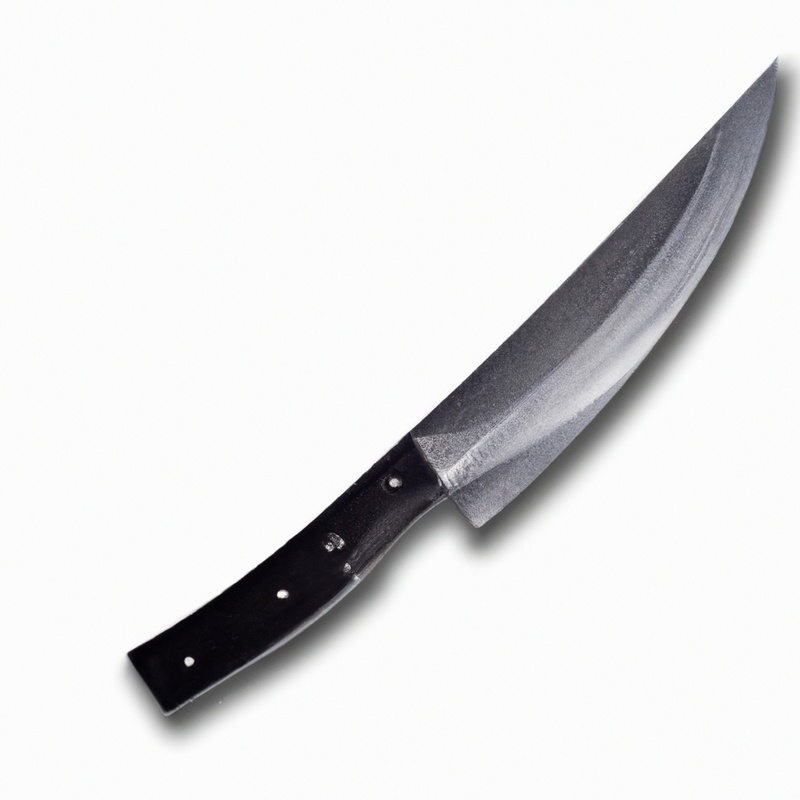
Serrated Knives and Other Uses
Other Foods That Benefit from a Serrated Knife
A serrated knife isn’t just useful for cutting through tough melon rinds. It can also come in handy for other types of food.
Here are some examples:
- Bread: The serrated edge helps to slice through crusty bread without crushing it.
- Tomatoes: The teeth on a serrated knife allow for clean cuts through the skin of a tomato without squishing the flesh.
- Citrus fruits: Whether it’s oranges, lemons, or limes, the serrated edge makes it easier to cut through the tough peel.
- Cake: Serrated knives are great for slicing through soft and delicate cakes without causing crumbs or compromising the shape.
- Roasts: When it’s time to carve a roast, a serrated knife can tackle the task with ease, thanks to its saw-like motion.
Remember to keep your serrated knife sharp and to use a gentle sawing motion to get the best results with these foods. Happy slicing!
Serrated Knives for Everyday Kitchen Tasks
Serrated knives are not just for cutting through tough rinds of melons. They are incredibly versatile and can be used for many everyday kitchen tasks.
Here are a few examples:
- Slicing bread: The serrated edge of a knife allows you to easily cut through crusty bread without squishing it.
- Cutting tomatoes: The serrated edge grips the skin of the tomato, making it easier to cut through without crushing the juicy flesh.
- Chopping herbs: Serrated knives make quick work of chopping herbs like parsley or cilantro, giving you finely minced leaves.
- Carving roasts: The saw-like action of a serrated knife makes it ideal for carving meats, ensuring clean, precise slices.
- Slicing delicate cakes: A serrated knife gently cuts through delicate cakes, preventing them from crumbling or tearing.
These are just a few examples of how serrated knives can be useful in everyday kitchen tasks. Their unique design makes them a valuable tool in any kitchen.
Maintenance Tips for Serrated Knives
Maintaining a serrated knife is essential for its longevity and performance. Here are some maintenance tips to keep your serrated knife sharp and in top condition:
- Hand wash: Always hand wash your serrated knife with warm, soapy water. Avoid using a dishwasher as the high heat and harsh detergent can damage the blade.
- Dry thoroughly: After washing, make sure to dry your knife thoroughly with a clean towel to prevent rust or corrosion.
- Sharpen carefully: Serrated knives require special sharpening tools designed for their unique edge. Use a serrated knife sharpener or a honing rod specifically made for serrated blades to maintain their effectiveness.
- Store correctly: It’s important to store your serrated knife properly to prevent any accidental damage. Use a knife block, magnetic strip, or blade guard to protect the blade and keep it safe.
- Avoid cutting on hard surfaces: To preserve the serrations on your knife, avoid cutting on hard surfaces like glass or ceramic plates. Instead, use a cutting board made of wood or plastic.
Final Verdict
The serrated edge of a knife is a game-changer when it comes to cutting through tough rinds of melons. Its unique design allows for a sawing motion, which prevents the delicate fruit from being crushed.
The rippled teeth of a serrated knife grip onto the tough exterior of melons, making the task much easier and efficient.
Not only is a serrated knife ideal for melons, but it is also versatile for other foods that require a gentle yet precise cut. To maintain the sharpness of the serrated edge, regular honing and proper storage are essential.
Overall, investing in a high-quality serrated knife is a worthwhile addition to any kitchen arsenal.

